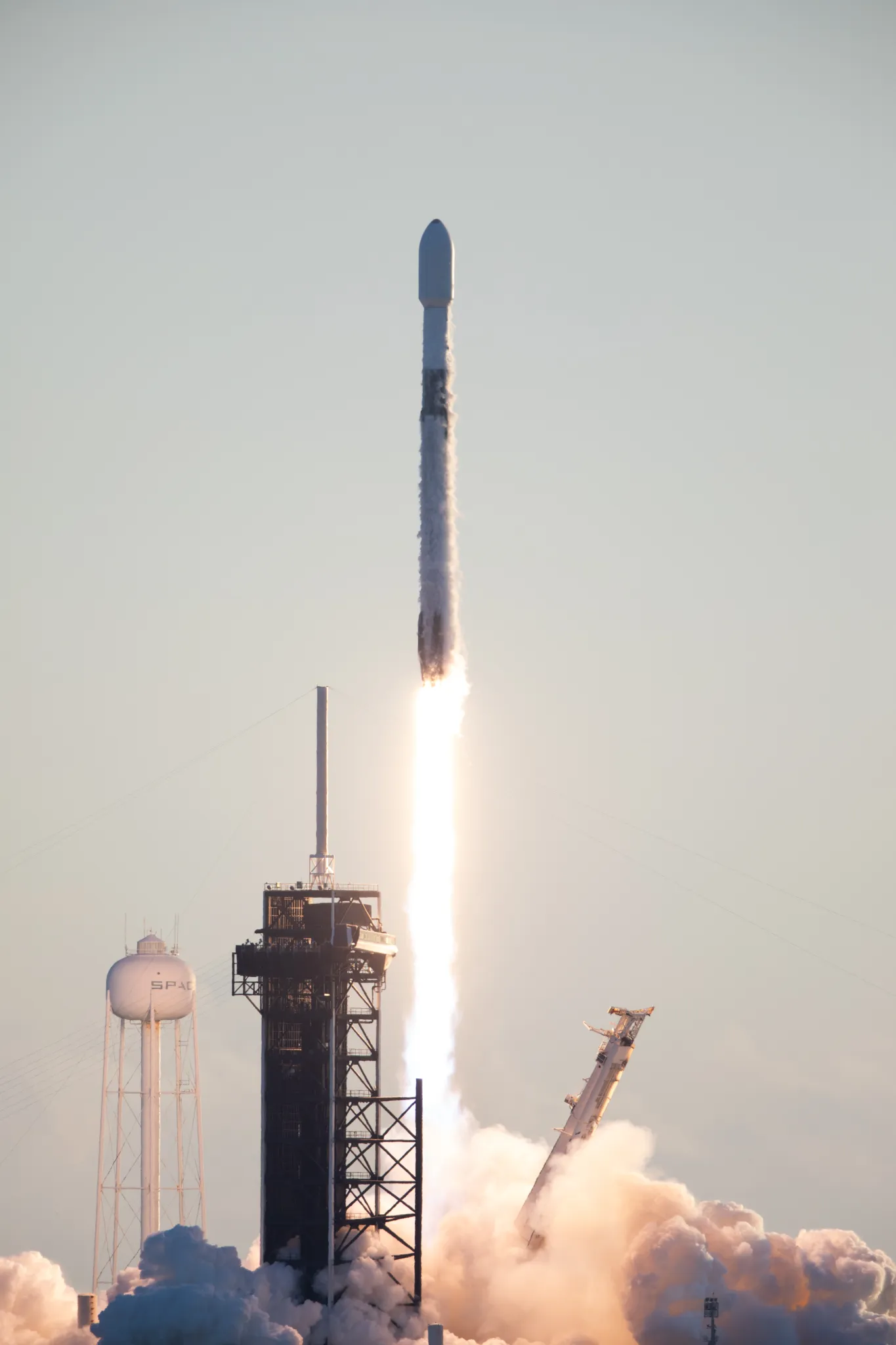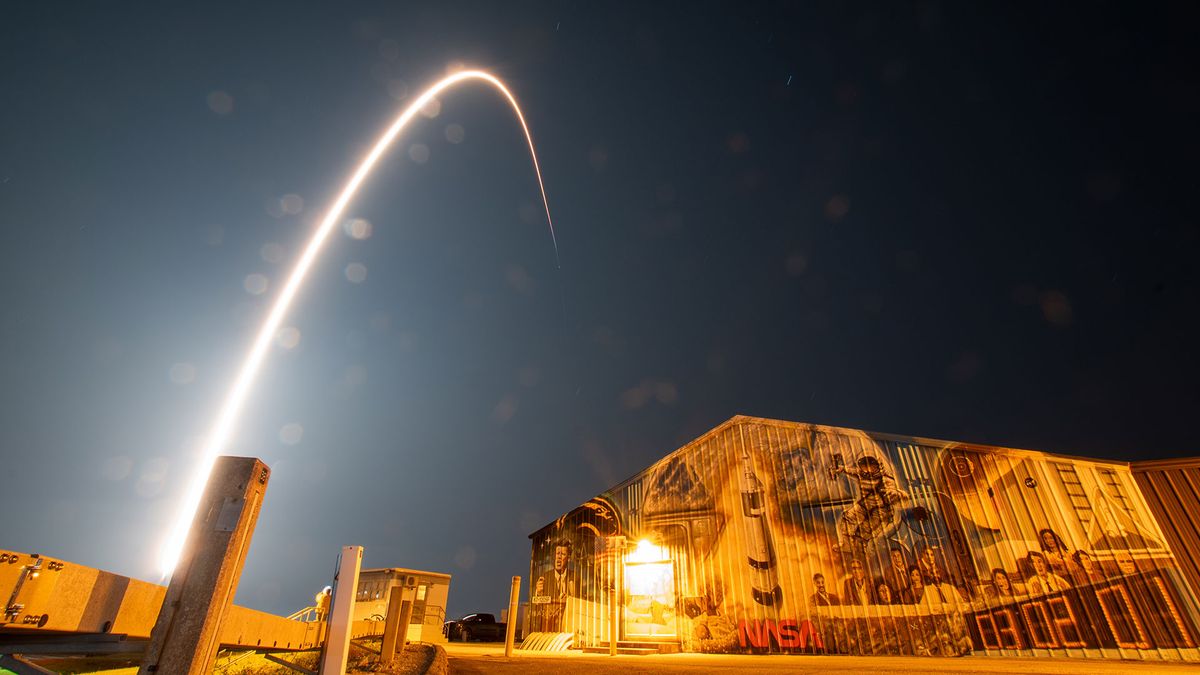On September 24, 2025, space exploration took a major leap forward with a significant launch by SpaceX’s Falcon 9 rocket from NASA’s Kennedy Space Center. This mission was not just another satellite deployment but a complex effort involving three critical spacecraft dedicated to understanding the Sun’s influence on our solar system and improving predictions around space weather — phenomena that can affect everything from communication systems on Earth to the safety of astronauts in deep space.
The three payloads aboard the Falcon 9 included NASA’s Interstellar Mapping and Acceleration Probe (IMAP), the Carruthers Geocorona Observatory, and the National Oceanic and Atmospheric Administration’s (NOAA) Space Weather Follow On–Lagrange 1 (SWFO-L1) spacecraft. Each of these missions has a distinct focus but a collective goal: to deepen knowledge about solar wind, space weather, and the complex interactions between solar particles and planetary environments.
NASA’s IMAP mission is designed to map and analyze particles flowing outward from the Sun as well as the processes accelerating them. This probe will provide critical data on the heliosphere—the bubble-like region of space dominated by the solar wind enveloping our solar system. Understanding the heliosphere’s behavior is key to protecting spacecraft, communication systems, and astronauts venturing beyond Earth’s magnetosphere.
The Carruthers Geocorona Observatory, named after the pioneering astrophysicist Alan Carruthers, will study the geocorona, a faint cloud of hydrogen atoms enveloping Earth. This observatory aims to detail how the Sun’s radiation influences this atmospheric layer, which plays a subtle but significant role in Earth’s space environment.
NOAA’s SWFO-L1 spacecraft is focused on real-time space weather monitoring. Positioned at the Earth-Sun Lagrange Point 1 (a point of gravitational balance between Earth and the Sun), this satellite will provide early warnings of solar storms and coronal mass ejections (CMEs) that can disrupt power grids, satellite operations, and communication networks. The ability to forecast space weather events more accurately is vital for both Earth-based infrastructure and space mission safety.

Alongside these remarkable missions, NASA’s Artemis program is generating excitement for deep space exploration. Set for early 2026, Artemis II will be the first crewed mission in NASA’s new lunar exploration initiative. The spacecraft will carry four astronauts on a carefully planned journey around the Moon, testing critical systems needed for human survival and operation in deep space. This mission is a precursor to Artemis III, which aims to land astronauts on the lunar South Pole by 2026, marking a landmark return to the Moon and the first-ever manned exploration of this scientifically rich region.
SpaceX’s role in space infrastructure continues to grow dynamically, as evidenced by its recent launch of 28 more Starlink satellites on another Falcon 9 flight — the company’s 122nd Falcon 9 mission this year. The Starlink constellation aims to extend global broadband internet access via low Earth orbit satellites, expanding connectivity to previously underserved areas globally. This high cadence of launches underscores the rapid expansion of satellite mega-constellations shaping modern telecommunications and data services.
Complementing these operational missions, the scientific community continues to analyze groundbreaking data from flagship observatories. The James Webb Space Telescope (JWST), functioning for over three years now, is delving deeper into cosmic origins, exoplanet atmospheres, and galaxy formation. Simultaneously, the Hubble Space Telescope has delivered stunning new imagery, including recent snapshots capturing dynamic celestial phenomena.
Moreover, astronomers and planetary scientists are paying close attention to solar phenomena beyond Earth’s vicinity. Unique observations include captivating auroras on Saturn, adding to understanding of magnetospheric interactions at other planets.
A rare highlight came from NOAA’s GOES-19 satellite, which captured extraordinary footage of a solar eclipse from space. This vantage point offers unmatched perspectives on such transient astronomical events, enhancing both scientific insight and public engagement with space phenomena.
Collectively, the events and missions of 2025 reflect a multifaceted advance in space science and exploration. From intensive study of our Sun’s impact on the solar system and the crucial groundwork for returning humans to the Moon, to expanding satellite internet infrastructure and unlocking mysteries across the universe, space activity this year is marked by remarkable achievements and bold ambitions.
As humanity pushes further into the cosmic frontier, these missions and observations will shape the future of space travel, technology, and scientific discovery. For those interested in specific missions or breakthroughs, there are rich resources and ongoing updates to explore the finer details and progress in each endeavor. Space in 2025 is not just about observing the stars—it is about actively shaping our presence and survival beyond Earth.

